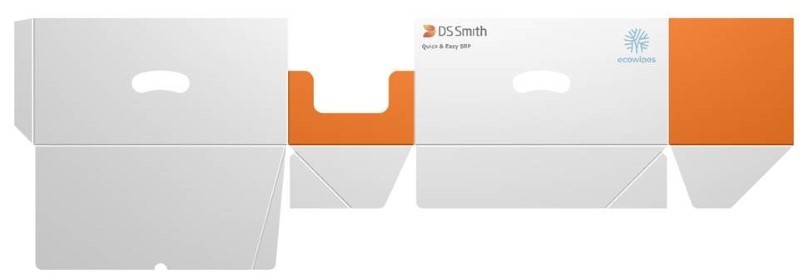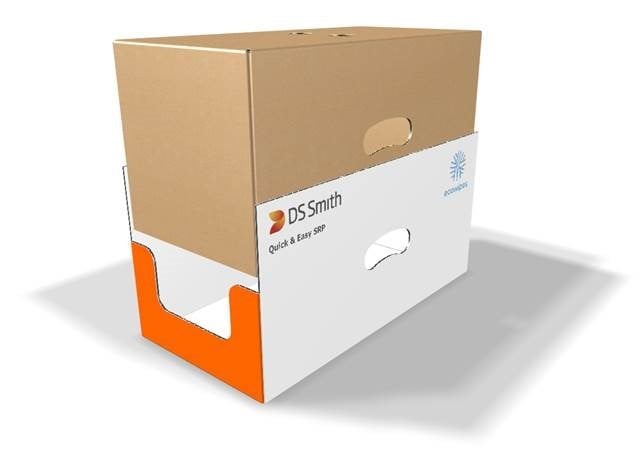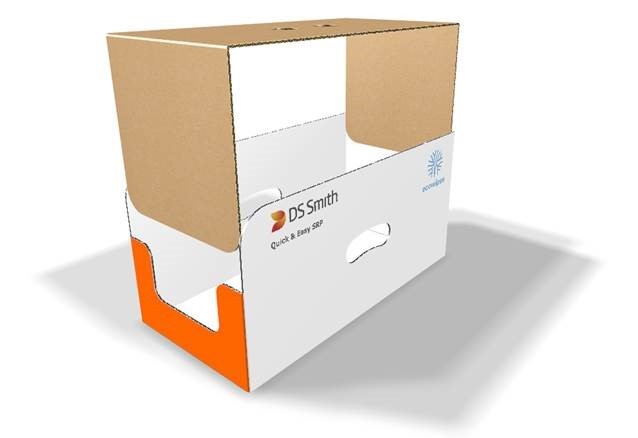DS Smith and ECOWipes reduce CO2 emissions by 10% and costs by 30% thanks to the optimization on SRP packaging
The implemented solution allowed for 30% savings in the entire supply chain. An additional effect of these activities was the reduction of CO2 emissions by 10%.
EcoWipes is a manufacturer of nonwovens ,mainly used in children's, cosmetic, hygienic and household. The company is constantly looking for innovation and optimization. We implemented our collaborative approach with them.
First of all we undertook a customer’s production line audit to identify where saving could be made.. One of the saving we identified concerned SRP (shelf ready packaging) packaging made of corrugated cardboard for a leading own brand of baby wipes. Experts from DS Smith noted that glued packaging with a full bottom and a very strong lid could be optimized.
SOLUTION:
Changes have been made to the two-piece SRP packaging:
Bottom - previously glued bottom with a full bottom was changed by shortening one of the flaps - so far it was the width of the entire bottom. By slightly strengthening the load for the bottom of the package, it was possible to use an automatic but incomplete bottom. This change made it possible to reduce the consumption of raw materials from 0.48 m2 to 0.39 m2, i.e. by 18%.
Version before with a longer flap on the bottom:

Optimized version, with a shortened flap:

Lid - the existing very strong structure, glued to the full height, changed to a U-type lid - reduction of raw material consumption from 0.37 m2 to 0.15 m2 - by 60% measurable.
Before optimization:

After optimization:

After testing, the new packaging was put into production.
BENEFITS:
The implemented solution allowed for savings in the entire supply chain. The cost of the packaging itself was 32% lower. However, these are not all savings. Thanks to the fact that the amount of raw material used was reduced, the optimization of the packaging reduced the costs of inbound logistics (by 32%), the packaging line (by 17%), storage (by 33%) and recycling by 40%. An additional effect of these activities was the reduction of CO2 emissions by 10%.
Costs have been reduced by 30% throughout the supply chain.
This example proves that the collaborative approach and the joint search for optimization with suppliers brings measurable results.
Related Content: